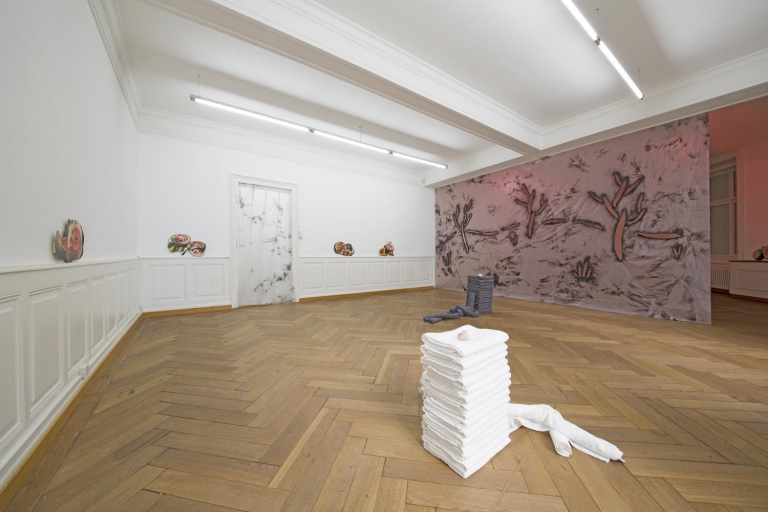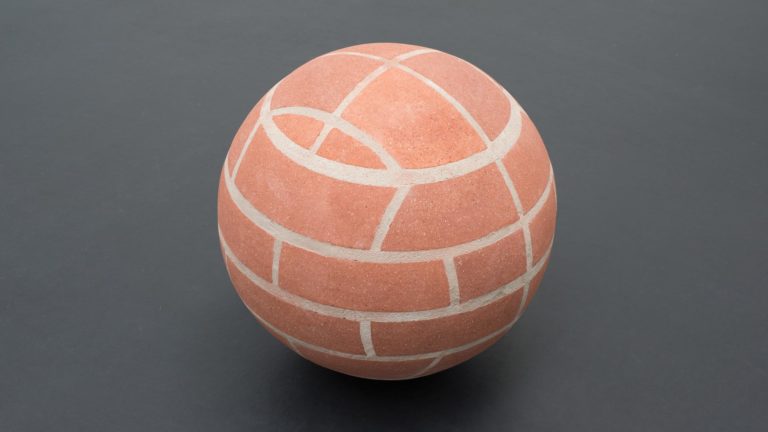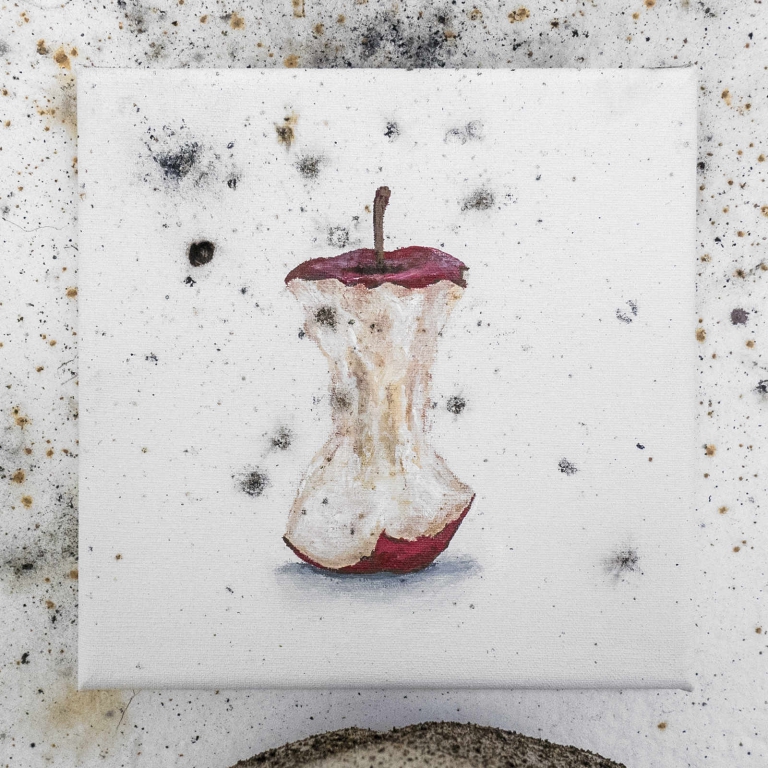Artist: Marguerite Humeau
Exhibition title: RIDDLES (Final Beats)
Venue: Museum Haus Konstruktiv, Zurich, Switzerland
Date: October 26, 2017 – January 14, 2018
Photography: all images copyright and courtesy of the artist, ©Museum Haus Konstruktiv and the respective copyright holders
Museum Haus Konstruktiv and Zurich Insurance Group Ltd are very pleased to declare Marguerite Humeau the winner of this year’s Zurich Art Prize and to announce an important change on the occasion of this internationally renowned award’s tenth edition: as of 2017, in addition to the previous sum of CHF 80’000, which is always used for a solo exhibi-tion at Museum Haus Konstruktiv, the winner receives another CHF 20’000 in prize money.
Marguerite Humeau (b. 1986 in Cholet, lives in London) has become known in recent years for her large-format installations, seemingly organic and creatural sculptures. When conceptualizing her works, Humeau often takes prehistoric events, scientific theories and occult notions as a starting point.
The exhibition RIDDLES (Final Beats) at Museum Haus Konstruktiv belongs to a larger complex of works, also called RIDDLES, parts of which have already been exhibited in New York (C L E A R I N G New York/Brussels), Berlin (Schinkel Pavillon) and Versailles (Bosquet de l’Arc de Triomphe, Château de Versailles). The figure at the center of all RIDDLES exhibitions is that of the sphinx, a human-animal composite being, the begin-nings of which date all the way back to the early history of humanity. In both Egyptian and Greek mythology, a protective function is attributed to the sphinx: the ability to guard humanity against potential enemies. In ancient Greece, it would also decide on life or death according to whether a riddle was answered correctly or incorrectly. Mar-guerite Humeau bridges the gap between past and present, hypothesizing that today’s surveillance systems, drones for instance, are directly descended from the ancient fig-ure of the sphinx.
While researching the origins of the sphinx, the artist came across the Lion Man, a figu-rine 35’000 to 41’000 years old, found in 1939 in the cave Hohlenstein-Stadel in the valley Lonetal. This shows that sphinx-like figures were already being made in the Upper Paleolithic Age, a time when humans were exposed to wild animals and had not yet be-come the dominant species on Earth. This led the artist to assume that early humans invented the figure of the sphinx as a kind of protective deity to guard against enemy attacks. Humeau sees the sphinx as a hybrid of all menacing attackers, which it pro-tects and also threatens.
The ambivalent motif of protection and threat is also evident in the exhibition at Haus Konstruktiv. The visitor is first directed along a narrow corridor before entering a space that comes across as clinically cool. Situated in the right-hand half of this space is the audibly breathing Sphinx Otto Has Absorbed Humankind, a large sculpture that is turned away from us. While its extensive wings resemble those of a vulture preparing to fly, its face has the features of a lion. In conceiving this sculpture, Humeau has concentrated on the moment of transformation from wild animal to protective deity, which lends the sphinx sculpture a threatening aspect, but also creates an impression of grandeur.
On the second floor, the ochre-red-colored space with the title Monument of Humankind is reminiscent of ancient tombs. The choir that can be heard in the background has 108 billion voices – this corresponds to the total number of people who have ever lived on Earth. The piece Digital Desert is like a folding screen with a design featuring a camouflage pattern of skin tones. As a concealing object, it raises the open question of whether the modern sphinxes and drones are to be protected from the human eye or, conversely, humans are to be protected from the drones.
With her Monument of Humankind, Marguerite Humeau creates an apocalyptic scenario, in which the modern sphinxes have seized power. She thus thematizes the ambiguity of contemporary surveillance systems. Transferring the motif and threat scenario of the sphinx to our world, which is shaped by horrible wars and frightening technological de-velopments, she brings together the past, present and future. Thus, the exhibition oscillates between multiple worlds and different times, between facts and fictions – and investigates how knowledge about myths and fragmentary records are generated.
The jury chose Marguerite Humeau as the prize winner because her works formulate an independent position characterized by scientific curiosity and precision, while also sharing parallels with the scientific basis of constructivist-concrete art.
Marguerite Humeau’s most important exhibitions, alongside the solo shows at Schinkel Pavillon in Berlin (2017), at Palais de Tokyo in Paris (2016) and at Nottingham Contemporary (2016/2017), include her involvement in exhibitions at Château de Versailles (2017), on the High Line in New York (2017), at Seoul Biennale (2016), at Manifesta 11 in Zurich (2016) and at the following institutions: TBA21 Thyssen-Bornemisza Art Con-temporary – Augarten, Vienna (2015), Serpentine Gallery, London (2014), Victoria and Albert Museum, London (2014), Hayward Gallery, London (2014), MoMA, New York (2014), Nottingham Contemporary, De La Warr Pavilion (2013) and Barbican Art Gallery, London (2011).
The awards and grants that Humeau’s oeuvre has been honored with include the Bursary Award from the Royal British Society of Sculptors, the Grant for the Arts from the Arts Council England and the RCDAV Research Grant from HEAD in Geneva.
Marguerite Humeau, RIDDLES (Final Beats), 2017-2018, exhibition view, Museum Haus Konstruktiv
Marguerite Humeau, RIDDLES (Final Beats), 2017-2018, exhibition view, Museum Haus Konstruktiv
Marguerite Humeau, RIDDLES (Final Beats), 2017-2018, exhibition view, Museum Haus Konstruktiv
Marguerite Humeau, RIDDLES (Final Beats), 2017-2018, exhibition view, Museum Haus Konstruktiv










